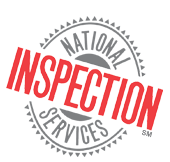Understanding essentials
If you own, buy and sell commercial real estate, it’s important that you understand and follow the baseline property condition assessment process. A thorough PCA, conducted by a qualified field observer, will provide you with the information you need to make fiscally sound decisions about the condition, deferred maintenance items and costs of properties that you own or may be interested in purchasing.
A PCA, as defined in ASTM standard E 2008-15, consists of the following steps:
- Documentation review and interviews;
- Walk-through survey;
- Estimates of probable costs to correct deficiencies; and
- Property condition report.
First, the field observer conducts a review of a property’s readily available documents, including government documents such as the certificate of occupancy, outstanding and recorded material building code violations and recorded material fire code violations. Owner-provided documentation such as appraisals, safety inspection records, warranty information on building systems, repair costs records and others also are reviewed.
Next, the field observer does a walk-through survey of the property. Typically, he examines and documents site conditions (such as storm water drainage and landscaping), utilities, building frame and building envelope, roofing, plumbing, heating, air conditioning and ventilation, electrical systems, elevators, fire protection systems and interior finish items. Field measurements are taken to corroborate documented measurements. Americans With Disabilities Act compliance generally also is noted, as are Federal Fair Housing Act requirements.
Additional assessments are completed during the walk-through if the property is a multifamily property, a commercial office building or a retail building. In addition to written notes, the field observer also takes representative photographs of the building’s exterior, roofing, building systems, plumbing, etc., to augment documentation.
Based on the documentation review and walk-through, the PCA consultant then estimates any significant costs that will be incurred to correct physical deficiencies found on site. The repair estimates may be based on commercially available cost information, vendor estimates or historical property costs for the property. While the PCA’s cost estimates are just that – estimates – and likely will vary from actual vendor bids at the time of the repair, they should help owners and buyers plan accordingly for projected repair costs.
Finally, a property condition report, or PCR, is prepared. This document may be written by the field observer or by a second consultant. The PCR should include an executive summary, a general description of the property, a statement of general physical condition, an explanation of deferred maintenance, repair costs estimates and a discussion of any items of particular note or concern. Property photos are included in the report, as are copies of all documents used in the documentation review.
Before retaining a field observer and PCR reviewer, check credentials. Consider education, training and experience. It is recommended that the PCR reviewer possess a professional designation in architecture or building or appropriate experience and/or certifications in the construction fields. Keep in mind that the PCR is only as good as the walk-through, and the walk-through is only as good as the individual performing it.
